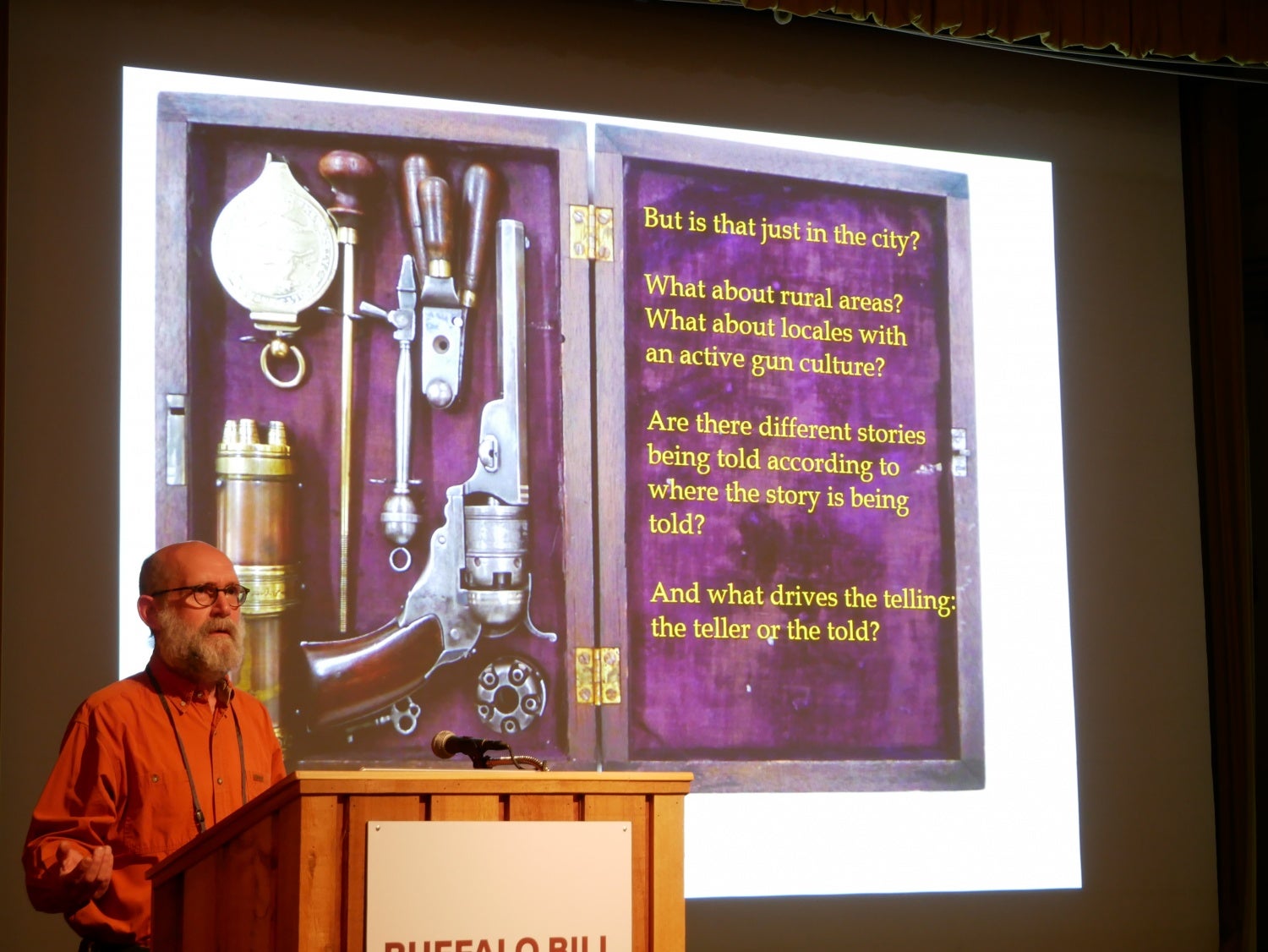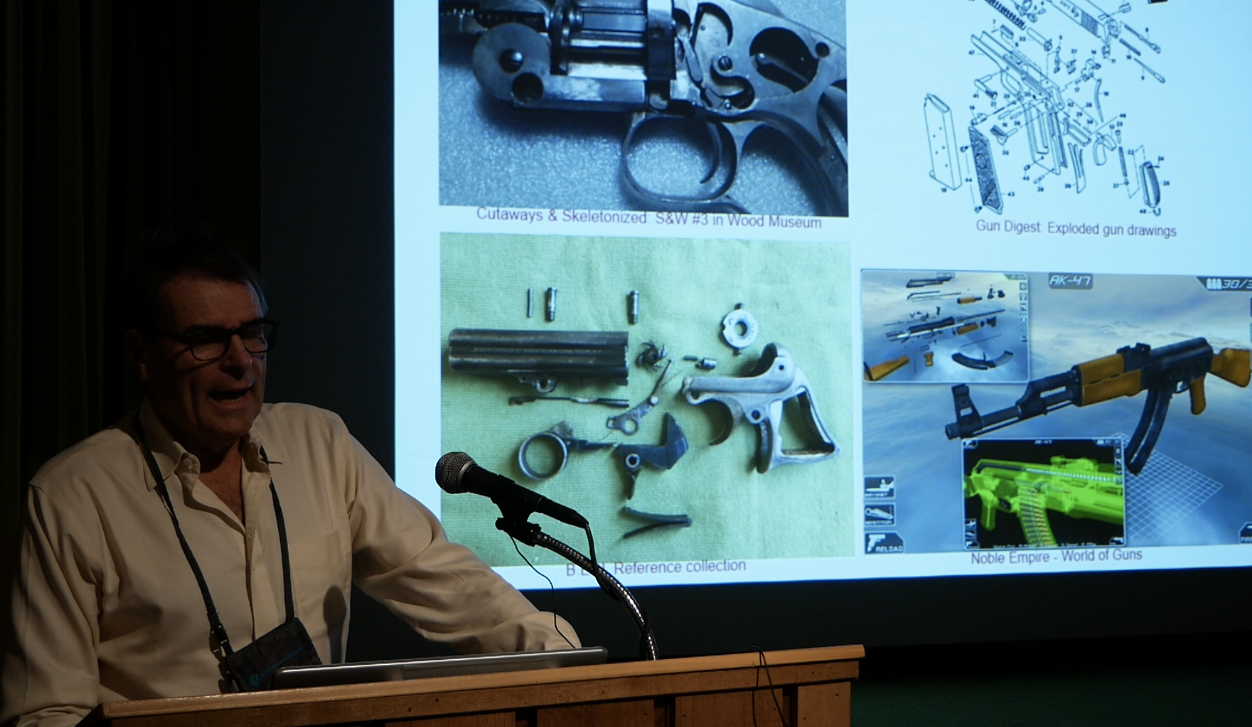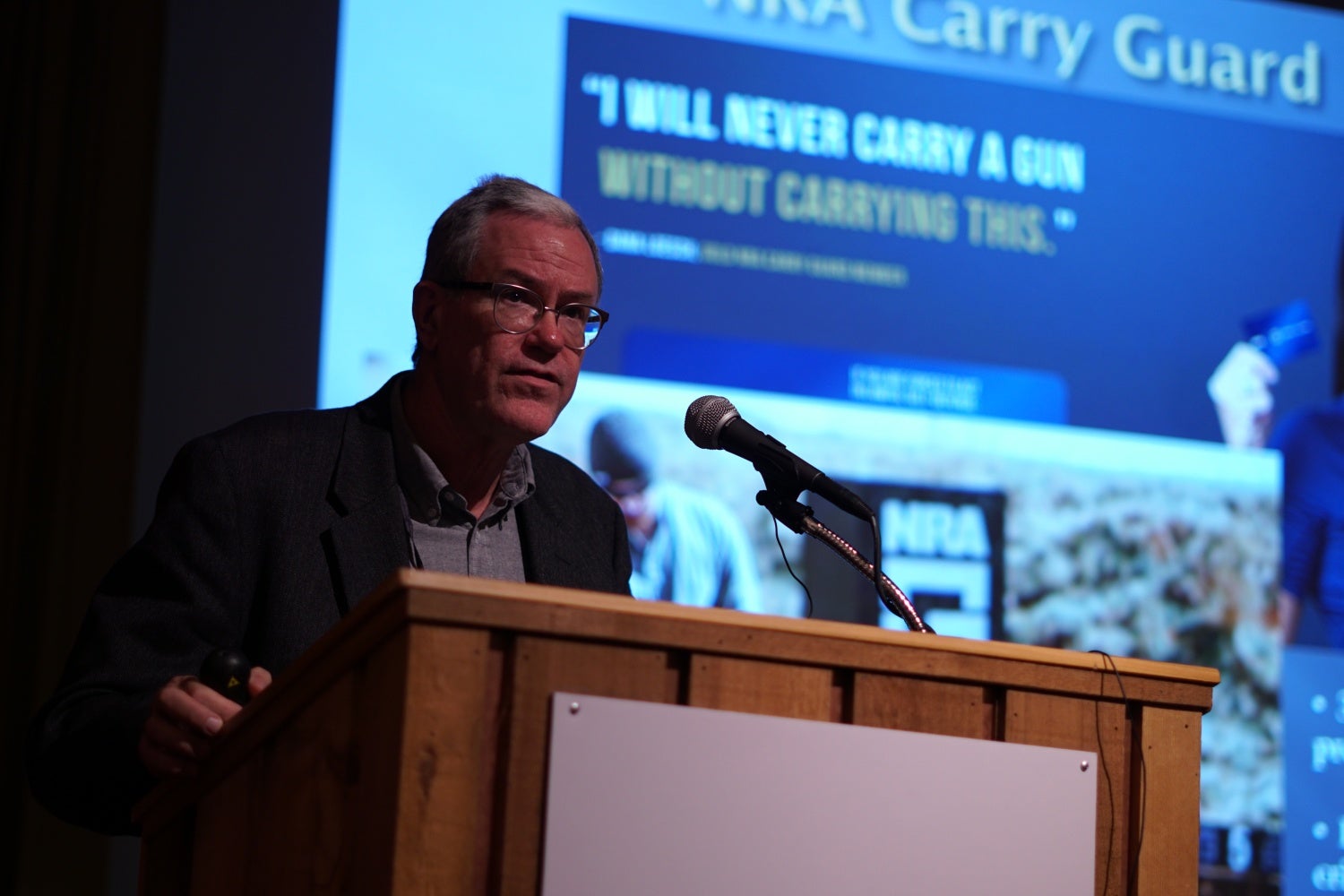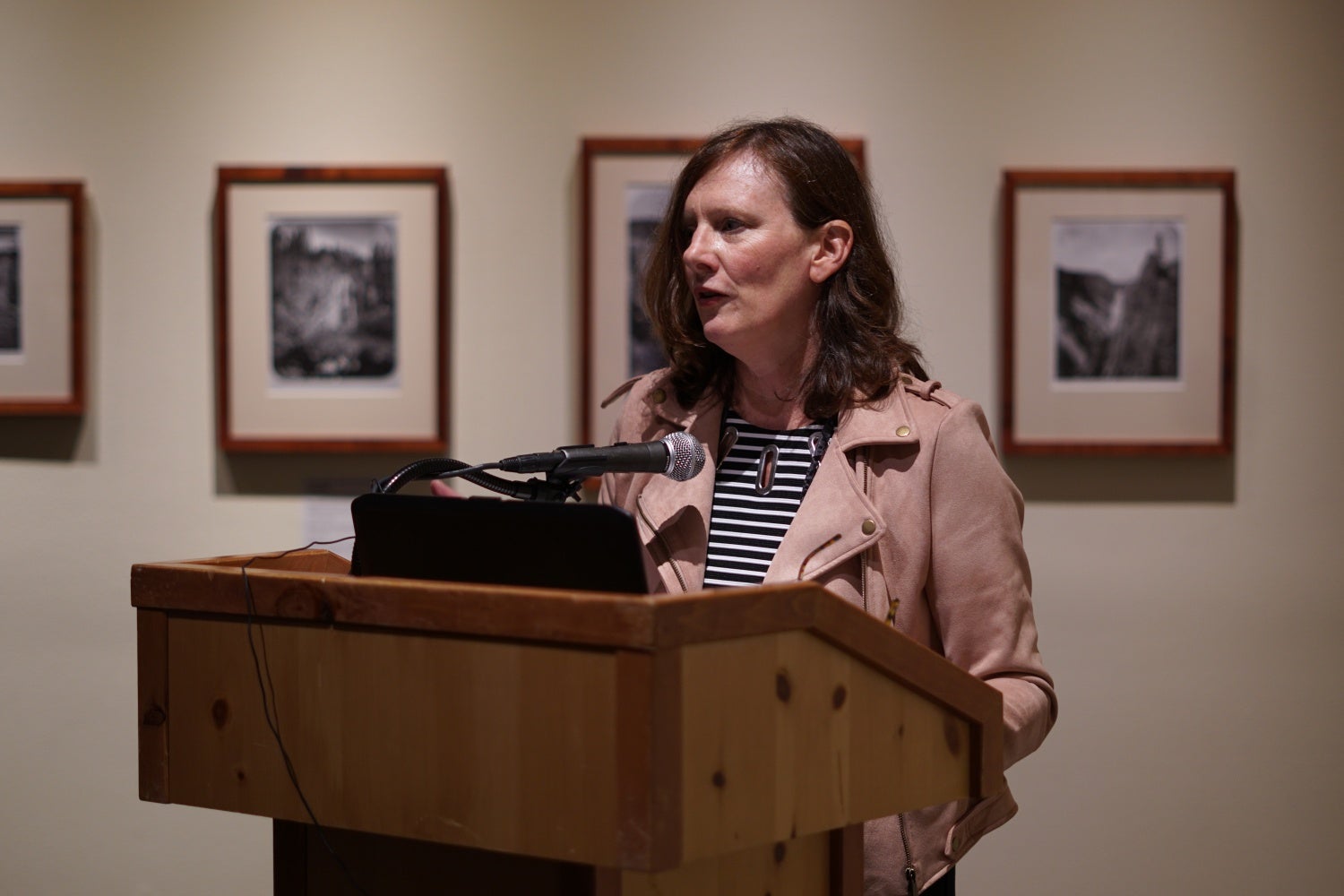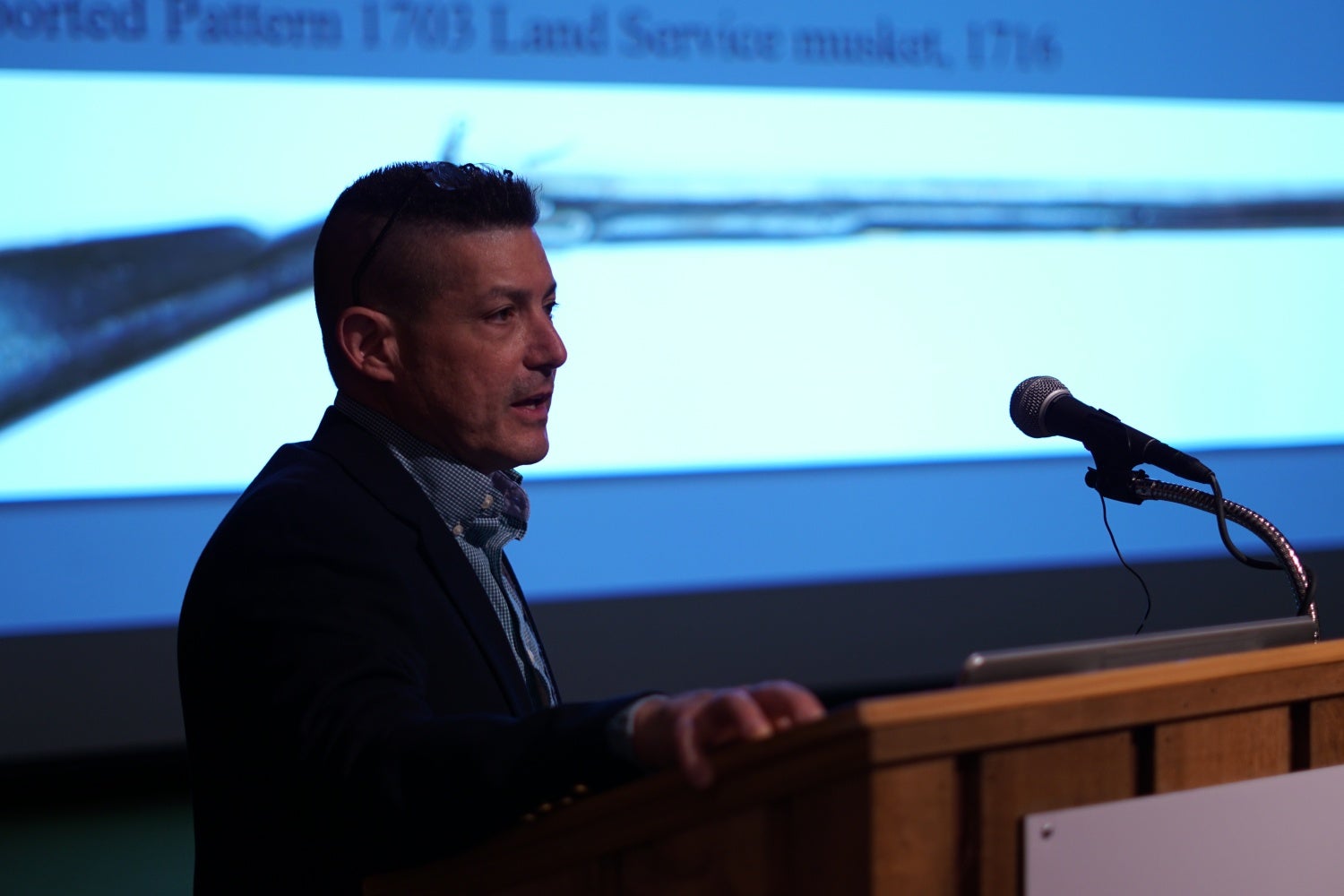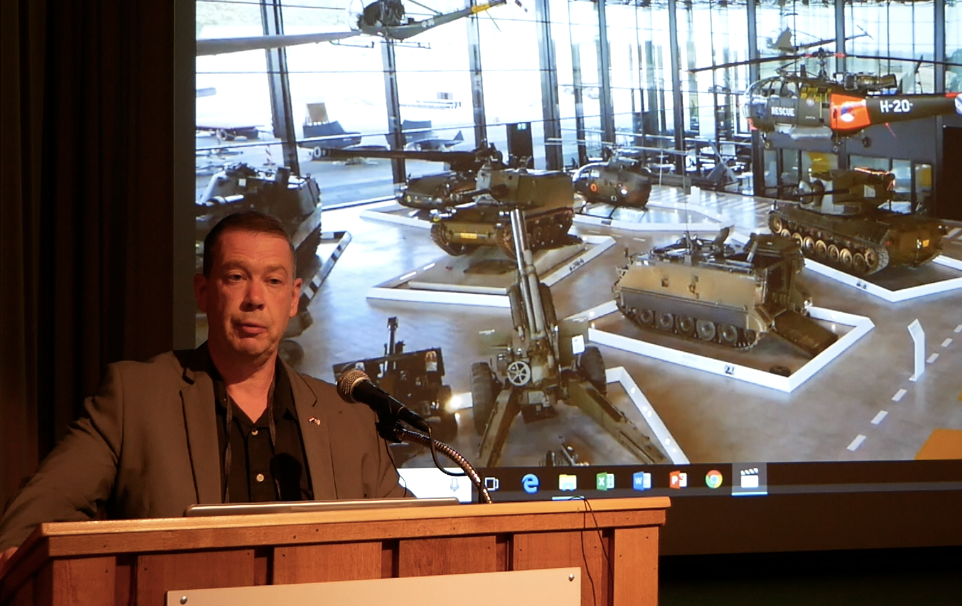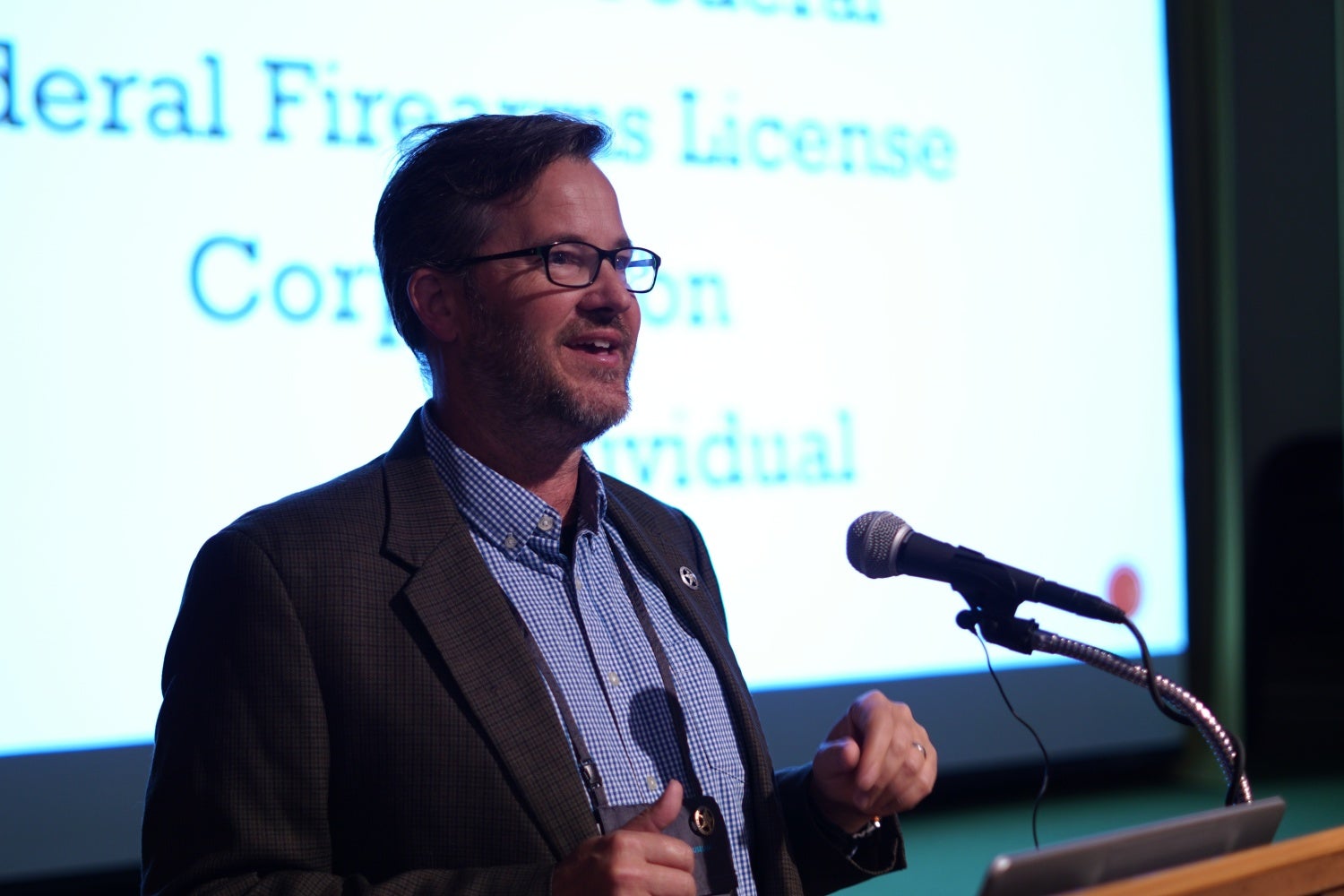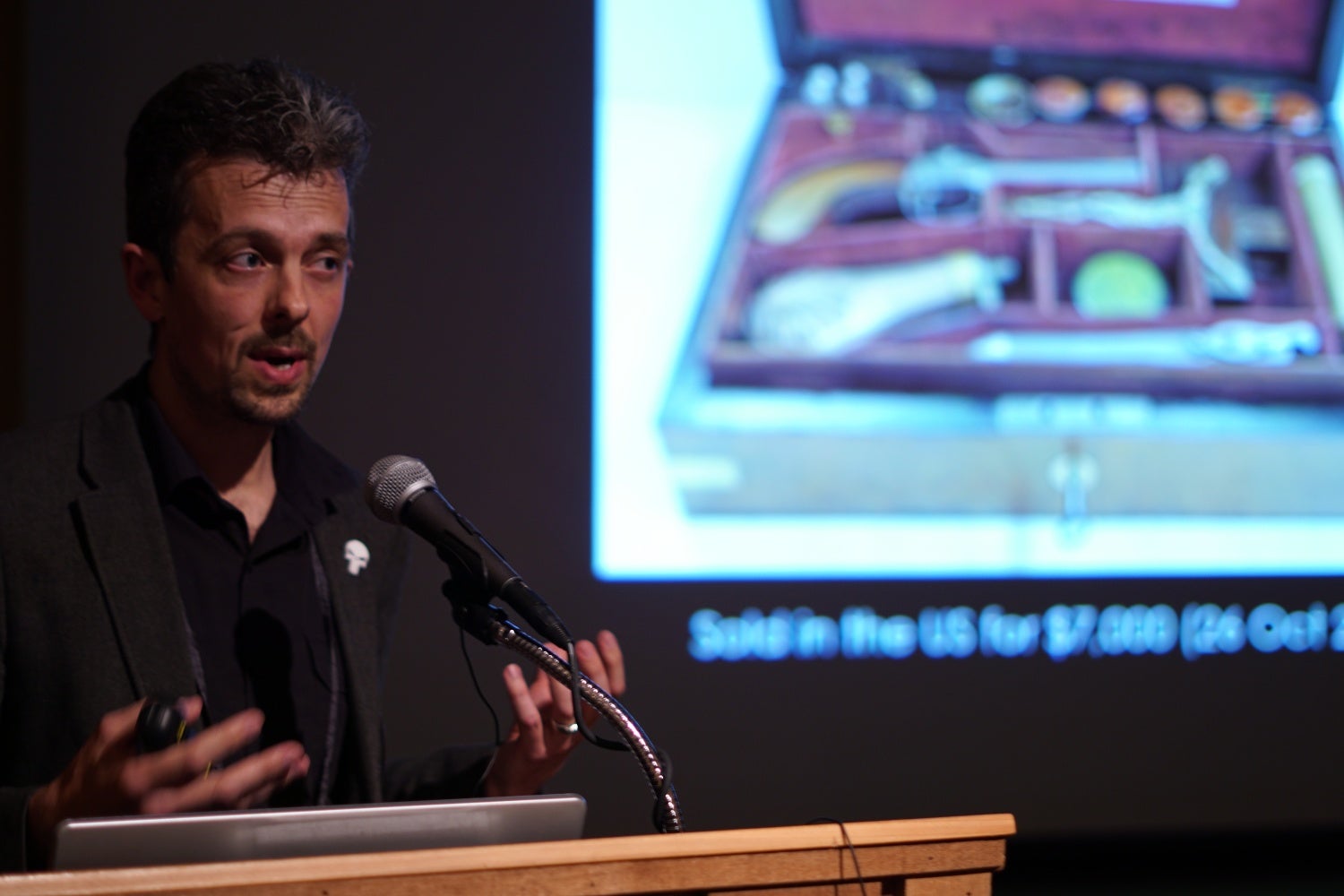Held for the second time at the Cody Firearms Museum in Wyoming, the Arsenals of History Symposium is unique in that it is the first series of symposiums specifically devoted to the field of firearms museum curators. Attendees included chief curatorial staff from the NRA National Firearms Museum, Springfield Armory National Historic Site, Royal Armouries National Firearms Collection, Smithsonian Gun Room, in addition to many more from across the country and internationally. The event was sponsored and hosted by the Cody Firearms Museum’s curator’s Ashley Hlebinsky and Daniel Michael, in addition to help from the whole Cody team.
Due to differing social and political attitudes towards small arms history and collections throughout the world, specific needs for displaying and preserving such artifacts, and even the legal parameters that exist for museums attaining and working with firearms, museum curators and historians that deal exclusively with small arms collections are working in a very unique set of circumstances compared to art or car museums for example. This year’s symposium focused on the role of ethics among such curators and some of the dilemmas that they are faced with over the course of their careers. However, topics much broader than ethics were discussed as tangents throughout the 3-day event so there really was a little bit of subject matter for everyone involved, even the non-curators that attended.
TFB had the privilege of attending all 3 days of the conference and will be able to give a brief summary through text and photos of the talks that were presented.
Survey of Staff Attitudes Towards Firearms
Richard Moll-Autry Museum of the American West
Richard Moll was one of the most eloquent speakers and participants of the entire symposium, his questions and remarks always extremely on point even when discussing issues not related to his field. The presentation he did on his museum in Los Angeles highlighted some of the plights of a museum in California that suffers from the current political climate in the state. For example, when he first arrived at the museum over a decade ago, he questioned the staff as to why there wasn’t a single label indicating what caliber any particular firearm was when he first arrived. Of course, we are apolitical at TFB, but when it comes to history being displayed this was an increasingly frustrating topic at the symposium about firearms just being written off.
Restoration in Museums
John Byck- Metropolitan Museum of Art
John discussed early Met attempts at the restoration of centuries-old armor that would be extremely questionable in today’s curator environment. Although the good intentions were there, such practices would be considered very unorthodox today. He mentioned that almost every piece of armor or artifact on display needs a custom display stand, in addition to talking about a suit of chain mail that required the individual cleaning of 9,000 rings of steel! One very interesting point was that the Met contributed to the design of helmets in the First World War.
Teaching Firearms in Universities
Ben Nicholson, School of the Art Institute of Chicago
Professor Nicholson’s presentation on teaching firearms design to architecture students was by far the most fascinating presentation given on the first day in my opinion. Myself coming from academia I’ve always found mentioning small arms very restrictive in the current environment, but Ben goes ahead and somehow manages to give semester-length classes about firearms design and history at the University level while working at the Art Institute of Chicago and separately at Cornell.
NRA Programs Overview
Jim Supica- NRA Museums Division
Unfortunately, Phil Schrier couldn’t come out to the symposium for his original presentation but the current director of the NRA Museum Division Jim Supica was present and gave an overview of the various programs that the NRA runs. Some of the newer ones I was unfamiliar with such as the involvement of women in wilderness programs and the Carry Guard program.
Academic Work on Firearms Intersecting with Photography
Jennifer Tucker-Wesleyan University
Jennifer Tucker presented on some of her ongoing historical research in finding parallels between small arms and the development of photograph systems over the previous century that continues to this day. One simple example is in the language of the two, one “shoots” a firearm just like one “shoots” a camera. In addition how the development of optical devices for cameras has influenced the design of optics for small arms.
Reconversion and Restoration of Flintlocks
Erik Goldstein-Colonial Williamsburg
Erik really blew it out of the park in discussing current examples of forgeries involving significant muzzle-loading pieces that he himself has come across as curator at Colonial Williamsburg. Some of these are badly done fakes but what really hits home is the fact that some folks are actually taking older muskets that do have historical value and trying to modify them into muskets they never were to increase the value of them on the collector market. In Erik’s opinion, downright criminal.
Deaccessioning
Mathieu Willemsen-Dutch National Military Museum
Mathieu Willemsen was presented with a very unique situation as a museum curator. He had to get rid of over 60,000 items when his museums consolidated. Although the overwhelming majority weren’t small arms, there were perhaps several hundred that were. Most of these small arms were considered worthy to get rid of because his museum already had a surplus in their collection and on display. For example, he had several dozen M1 Garands left over from the Second World War whereas he really only needed a select dozen to showcase the history of the M1 rifle. Thankfully, it pains Mathieu’s heart to scrap a single firearm, just as it might any TFB reader. So he went to extreme lengths to try to find them homes both in Holland and in other museums in Europe. One of his neat schemes was that he went to modern factories such as Heckler & Koch, FN Herstal, B&T, in order to get modern designs, trading older designs with them. This is mostly because the new factories sometimes don’t have examples of their previous work, but want it to display at their own museums.
The funniest comment of the entire symposium goes to him when he was describing the museum’s history during the Second World War.
“When the Allies invaded Holland, they eventually bombed the museum and destroyed most of the collection… Thanks, Guys… At least the Germans paid admission…” The audience was in tears.
How a Museum Gets a Gun
Dave Kennedy-US Marshals Museum
David Kennedy of the U.S. Marshalls Museum gave a well-rounded presentation about how museums can stay in the legal zone when acquiring small arms for their collections. Whether this is older flintlocks, historical semiautomatic designs, or even NFA items. The Class III issue is something that was very hotly debated at the symposium, at this presentation and other ones. Some curators had similar experiences while others bad very favorable ATF officers.
The most important takeaway here is that if you find an unregistered NFA item in your attic, DON’T GIVE IT TO A PRIVATE MUSEUM. By law, they’ll just have to turn it into ATF. BUT. If you give it to a museum that is a part of the Federal Government, such as the Smithsonian, Springfield Armory NHS, etc… your machine gun has a chance of surviving in that collection because they are NFA exempt. You won’t be getting it back, but at least it won’t be cut to pieces by the ATF.
Collecting Objects with Dubious Pasts
Jonathan Ferguson-Royal Armouries
Jonathan Ferguson presented on the extremely odd curiosity of Vampire pistol kits. Interestingly he spent a good amount of time researching these curiosities and has essentially found out that they are more or less modern attractions from Eastern Europe instead of some several centuries year old historical artifact. He examines them from the very basic and mundane to the absolutely bizarre and completely out of the ordinary, maybe even “fake”.
This completes the coverage for the first day of the symposium, we’ll be publishing subsequent posts about each day so stay tuned!
 Your Privacy Choices
Your Privacy Choices

